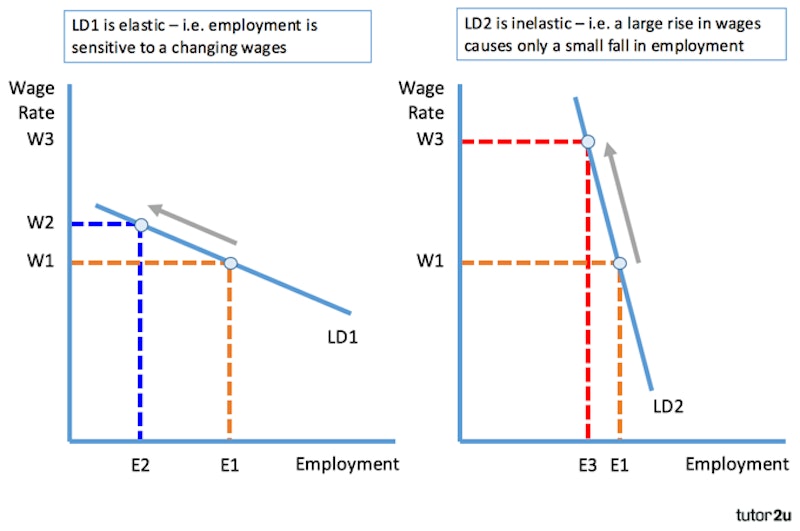Topic Videos
Elasticity of Labour Demand (Labour Markets)
- Level:
- AS, A-Level, IB
- Board:
- AQA, Edexcel, OCR, IB, Eduqas, WJEC
Last updated 21 Mar 2021
Elasticity of labour demand measures the responsiveness of demand when there is a change in the wage rate. This short topic video goes through the key factors affecting the elasticity of demand for labour.
Factors affecting the wage elasticity of demand for labour
- Labour costs as a % of total costs: When labour expenses are a high % of total costs, then labour demand is more wage elastic.
- Ease and cost of factor substitution: Labour demand is more elastic when a firm can substitute easily and cheaply between labour & capital inputs.
- Price elasticity of demand for the final product: This determines whether a firm can pass on higher labour costs to consumers in higher prices. If demand is inelastic, higher costs can be passed on.
- Time period – in the long run it is easier for firms to switch factor inputs e.g. bring more capital in perhaps replacing labour

You might also like
Demand for Labour (Labour Markets)
Study Notes
Elasticity of Labour Demand (Labour Markets)
Study Notes
Labour Market Economics (Revision Presentation)
Teaching PowerPoints
Unemployment Policies - The UK Youth Contract
Study Notes

The Battle between Robots and Skill
14th April 2015

Automation a factor behind falling real wages for millions
19th October 2014

Rising female employment in the construction industry
31st December 2014